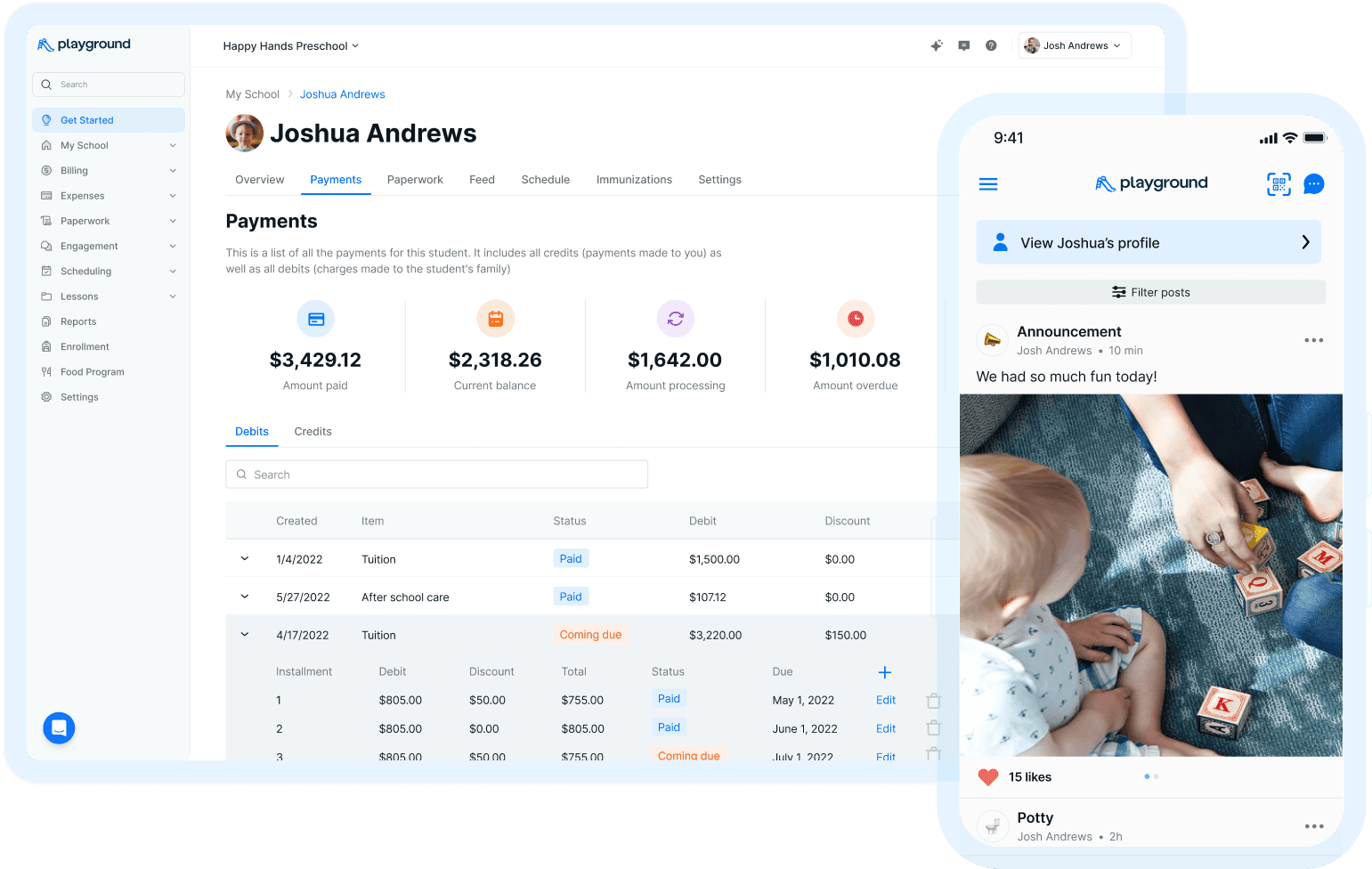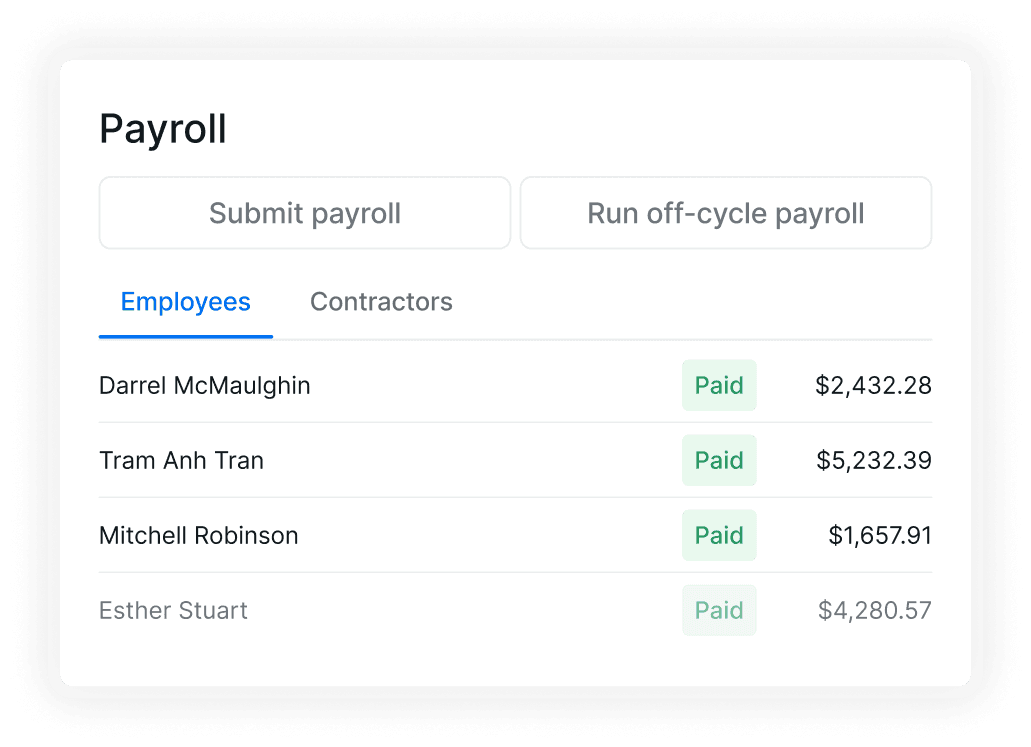Owning/directing a child care program in California by the numbers


Tamar Andrews
3 min read

Make your families & teachers happier
All-in-one child care management platform with billing, attendance, registration, communication, payroll, and more!
5.0 Rating

Make your families & teachers happier
All-in-one child care management platform with billing, attendance, registration, communication, payroll, and more!
5.0 Rating
Owning or directing a child care program can be a very rewarding and very prosperous venture if you understand the numbers: when it comes to licensing these programs, the State of California is all about the numbers.
Let’s take the actual licensing agencies themselves. Child care centers that are privately funded by tuition, religious institutions, are for-profit or non-profit, generally are licensed by the Health and Safety Code under Title 22. State and federally funded programs are generally licensed by Title 5 of the Education Code.
Child-to-teacher ratio numbers vary as well. For example, under Title 22 the ratio is 1 teacher for every 12 preschool children. Under Title 5, this same teacher can only have up to 8 children. For toddlers, Title 22 mandates 1 teacher for every 6 toddlers, and Title 5 mandates that this same teacher can have only 3 toddlers. Teacher education requirements vary even more. Under Title 22 a qualified teacher has to have completed 12 semester units in early childhood education. Under Title 5, the teacher has to have an actual teaching permit for early childhood from the California Commission on Teacher Credentialing.
Both Title 22 and Title 5 agree completely, though, where it comes to the safety of the children in their care:
-All employees must pass a thorough criminal background check.
-Care and supervision of children are of paramount importance and no child should ever be left unattended.
-They must comply with unannounced visits from licensing inspectors.
-Centers must report any suspected incidents of child abuse.
-They must follow all protocols for Covid-19 or other health-related contagion reporting and mitigation regulations.
The purpose of both Title 22 and Title 5 is to ensure the health and safety of each child in your care. Of course, there are also procedures you can put into place to rise above the minimal requirements of Titles 5 and 22. For example, implementing a contactless drop-off and pick-up procedure using one of the various apps such as Playground greatly increases the quality of the program. It ensures that you capture a signature for every arrival and dismissal, as well as Covid-19 screening for each child. Requiring teachers to meet a certain number of professional development hours per year greatly improves practice and performance.
Finally, one of the best practices a center owner/director can follow is implementing a parent-led advisory board. This is optimal for the following reasons:
-Families will feel a sense of ownership as well of the center and will support decisions made in collaboration with them more often.
-Parents in your advisory board will become the best source of advertisement for your center.
-The old adage that “more heads are better than one” holds true in child care as well. You may find that parents with experience in finance can help with budgeting, experienced parents in marketing or advertisement can help fill those last vacancies, and parents with educational experience may become your next best teacher.
Whichever Title your center is operating under, remember that YOU are still the one with the best title: owner and/or director and as such, it is up to YOU, ultimately, to establish the high-quality standards you will operate under.
Owning or directing a child care program can be a very rewarding and very prosperous venture if you understand the numbers: when it comes to licensing these programs, the State of California is all about the numbers.
Let’s take the actual licensing agencies themselves. Child care centers that are privately funded by tuition, religious institutions, are for-profit or non-profit, generally are licensed by the Health and Safety Code under Title 22. State and federally funded programs are generally licensed by Title 5 of the Education Code.
Child-to-teacher ratio numbers vary as well. For example, under Title 22 the ratio is 1 teacher for every 12 preschool children. Under Title 5, this same teacher can only have up to 8 children. For toddlers, Title 22 mandates 1 teacher for every 6 toddlers, and Title 5 mandates that this same teacher can have only 3 toddlers. Teacher education requirements vary even more. Under Title 22 a qualified teacher has to have completed 12 semester units in early childhood education. Under Title 5, the teacher has to have an actual teaching permit for early childhood from the California Commission on Teacher Credentialing.
Both Title 22 and Title 5 agree completely, though, where it comes to the safety of the children in their care:
-All employees must pass a thorough criminal background check.
-Care and supervision of children are of paramount importance and no child should ever be left unattended.
-They must comply with unannounced visits from licensing inspectors.
-Centers must report any suspected incidents of child abuse.
-They must follow all protocols for Covid-19 or other health-related contagion reporting and mitigation regulations.
The purpose of both Title 22 and Title 5 is to ensure the health and safety of each child in your care. Of course, there are also procedures you can put into place to rise above the minimal requirements of Titles 5 and 22. For example, implementing a contactless drop-off and pick-up procedure using one of the various apps such as Playground greatly increases the quality of the program. It ensures that you capture a signature for every arrival and dismissal, as well as Covid-19 screening for each child. Requiring teachers to meet a certain number of professional development hours per year greatly improves practice and performance.
Finally, one of the best practices a center owner/director can follow is implementing a parent-led advisory board. This is optimal for the following reasons:
-Families will feel a sense of ownership as well of the center and will support decisions made in collaboration with them more often.
-Parents in your advisory board will become the best source of advertisement for your center.
-The old adage that “more heads are better than one” holds true in child care as well. You may find that parents with experience in finance can help with budgeting, experienced parents in marketing or advertisement can help fill those last vacancies, and parents with educational experience may become your next best teacher.
Whichever Title your center is operating under, remember that YOU are still the one with the best title: owner and/or director and as such, it is up to YOU, ultimately, to establish the high-quality standards you will operate under.
Owning or directing a child care program can be a very rewarding and very prosperous venture if you understand the numbers: when it comes to licensing these programs, the State of California is all about the numbers.
Let’s take the actual licensing agencies themselves. Child care centers that are privately funded by tuition, religious institutions, are for-profit or non-profit, generally are licensed by the Health and Safety Code under Title 22. State and federally funded programs are generally licensed by Title 5 of the Education Code.
Child-to-teacher ratio numbers vary as well. For example, under Title 22 the ratio is 1 teacher for every 12 preschool children. Under Title 5, this same teacher can only have up to 8 children. For toddlers, Title 22 mandates 1 teacher for every 6 toddlers, and Title 5 mandates that this same teacher can have only 3 toddlers. Teacher education requirements vary even more. Under Title 22 a qualified teacher has to have completed 12 semester units in early childhood education. Under Title 5, the teacher has to have an actual teaching permit for early childhood from the California Commission on Teacher Credentialing.
Both Title 22 and Title 5 agree completely, though, where it comes to the safety of the children in their care:
-All employees must pass a thorough criminal background check.
-Care and supervision of children are of paramount importance and no child should ever be left unattended.
-They must comply with unannounced visits from licensing inspectors.
-Centers must report any suspected incidents of child abuse.
-They must follow all protocols for Covid-19 or other health-related contagion reporting and mitigation regulations.
The purpose of both Title 22 and Title 5 is to ensure the health and safety of each child in your care. Of course, there are also procedures you can put into place to rise above the minimal requirements of Titles 5 and 22. For example, implementing a contactless drop-off and pick-up procedure using one of the various apps such as Playground greatly increases the quality of the program. It ensures that you capture a signature for every arrival and dismissal, as well as Covid-19 screening for each child. Requiring teachers to meet a certain number of professional development hours per year greatly improves practice and performance.
Finally, one of the best practices a center owner/director can follow is implementing a parent-led advisory board. This is optimal for the following reasons:
-Families will feel a sense of ownership as well of the center and will support decisions made in collaboration with them more often.
-Parents in your advisory board will become the best source of advertisement for your center.
-The old adage that “more heads are better than one” holds true in child care as well. You may find that parents with experience in finance can help with budgeting, experienced parents in marketing or advertisement can help fill those last vacancies, and parents with educational experience may become your next best teacher.
Whichever Title your center is operating under, remember that YOU are still the one with the best title: owner and/or director and as such, it is up to YOU, ultimately, to establish the high-quality standards you will operate under.
Playground is the only app directors need to run their early child care center. Playground manages marketing, registration, billing, attendance, communication, paperwork, payroll, and more for child care programs. 300,000+ directors, teachers, and families trust Playground to simplify their lives.
Learn more by scheduling a free personalized demo.
See what Playground can do for you
Learn how our top-rated child care management platform can make your families & teachers happier while lowering your costs



Related articles
Stay in the loop.
Sign up for Playground updates.
Stay in the loop.
Sign up for Playground updates.
Stay in the loop.
Sign up for the updates.
© 2025 Carline Inc. All rights reserved.

© 2025 Carline Inc. All rights reserved.

© 2025 Carline Inc. All rights reserved.

Owning/directing a child care program in California by the numbers
Published Dec 8, 2021
|


